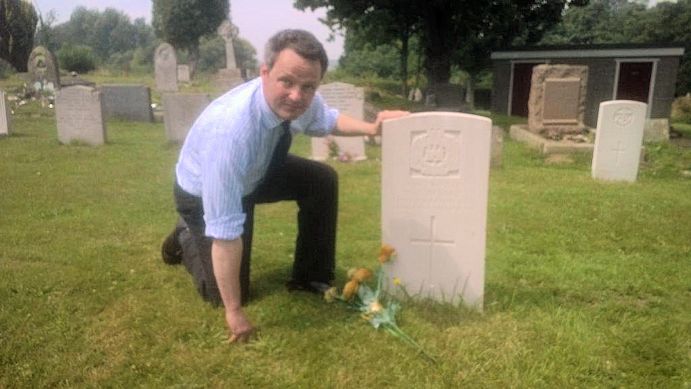12 September 2014
Peter Aldous, MP for Waveney, is urging local schools and constituents to visit their local Commonwealth war graves to gain a greater understanding of the scale and magnitude of the Great War and the impact that it has had on today’s society.
The call follows a national initiative spearheaded by the Commonwealth War Graves Commission (CWGC), the All-Party Parliamentary War Heritage Group and the ‘In From The Cold Project’ that maps over 300,000 Commonwealth war dead by each Parliamentary constituency. The initiative is supported Mr. Aldous who visited Commonwealth war graves at Lowestoft’s Normanston Drive Cemetery, St Margaret’s Church and St Michaels Oulton in July.
“The Centenary of the outbreak of the First World War is a time, not just for reflection and commemoration but also an opportunity to educate a new generation of young people about the extraordinary events of a hundred years ago and to bring to life some of the personal stories from this remarkable time,” said Mr. Aldous. “Working with local groups and students gives us all an opportunity to explore how we would like to secure this legacy for generations to come. Visiting the graves of the fallen is a simple but profoundly important way to commemorate the outbreak of the war.”
Deirdre Mills, CWGC’s Director of UK Area states that: “The Centenary is an opportune time for us to re-engage and connect with local communities and young people, and explain how the people who are buried in our graves got to be there, who they were, and where they were from. More than 300,000 Commonwealth servicemen and women are commemorated in the UK. Many died in military hospitals whilst being treated for their wounds or fell victim to the flu pandemic as the conflict drew to a close. Their graves reflect both the local impact of the war but also its wider historical significance.
“To highlight some of the personal stories of those who are buried or commemorated in our graves, we are installing over 100 visitor information panels throughout the UK during the Centenary. The panels incorporate QR codes which, when scanned with the latest smartphone technology enable visitors to read these stories and understand the historical context.”
Working with schools to bring this extraordinary period of history alive for students , the CWGC is in May launching a Local War Graves Visits programme in six locations – Cambridge, Oxford, Cannock Chase, Southampton, Plymouth and Cardiff – with plans to extend this to other parts of the UK later in the year. Teachers will be able to take advantage of the CWGC’s network of vetted and fully trained volunteers to take them around CWGC sites and war graves, highlight key hotspots, and assist them with lesson planning.
At the Education Show in mid-March, CWGC launched an online Virtual Cemetery education portal that provides schools and teachers with a comprehensive range of resources and support materials linked to the graves and memorials in their home town. The virtual cemetery website www.cwgc-virtual-cemetery.org is an interactive tool which enables pupils and teachers to view images and videos, learn more about CWGC’s work across the globe, and – most importantly – the people that are commemorated in its cemeteries and memorials.
The virtual cemetery resource has been designed to encourage debate and spark pupils’ interest in thinking about the centenary of the First World War and the different ways in which everyone can remember the servicemen and women who gave their lives in the conflict. The website also supports teachers with curriculum notes, lesson plans and suggestions for classroom activities.
For more information, contact: Peter Francis on 01628 507163 or 07766 255884 or by email peter.francis@cwgc.org

